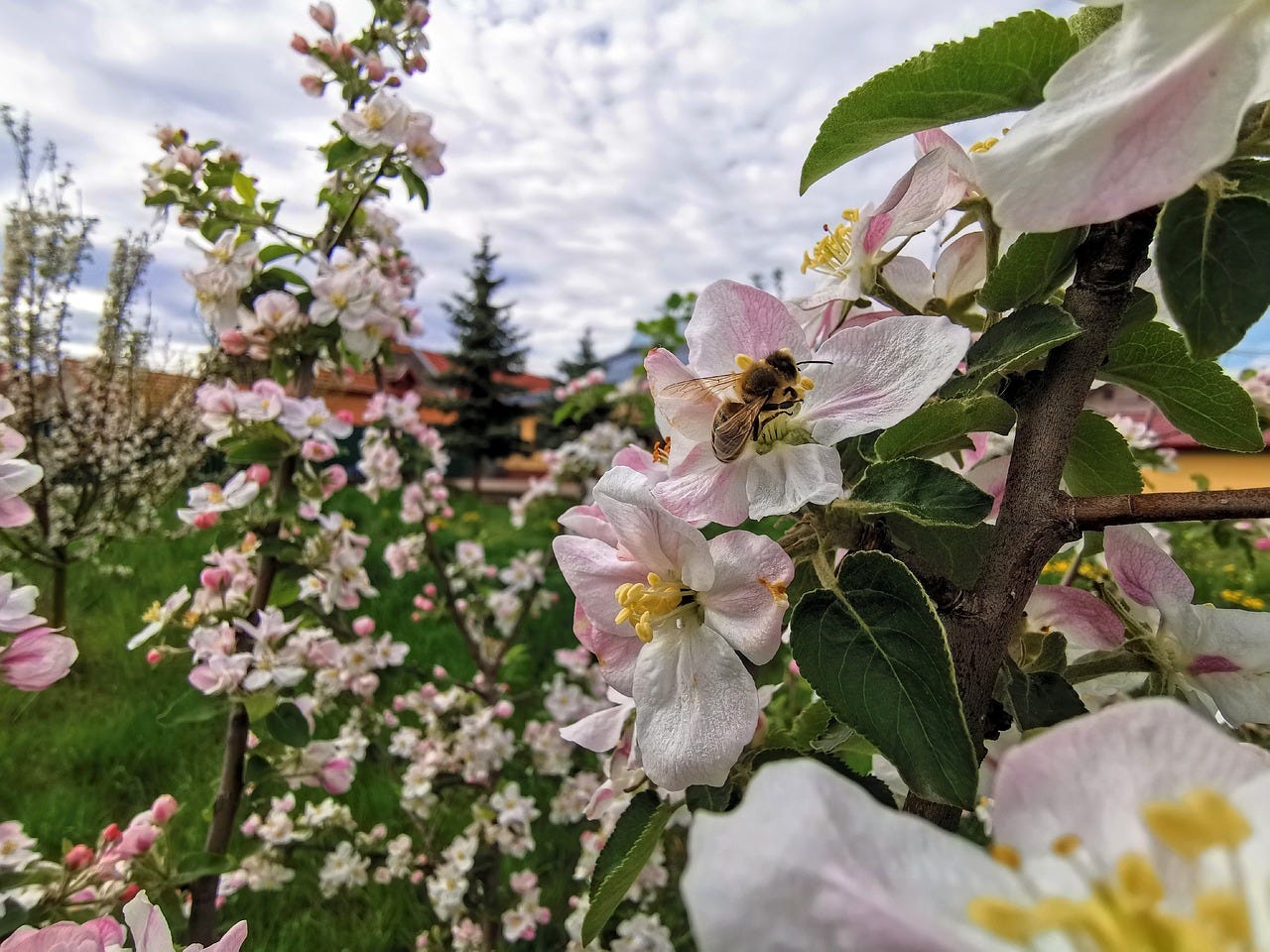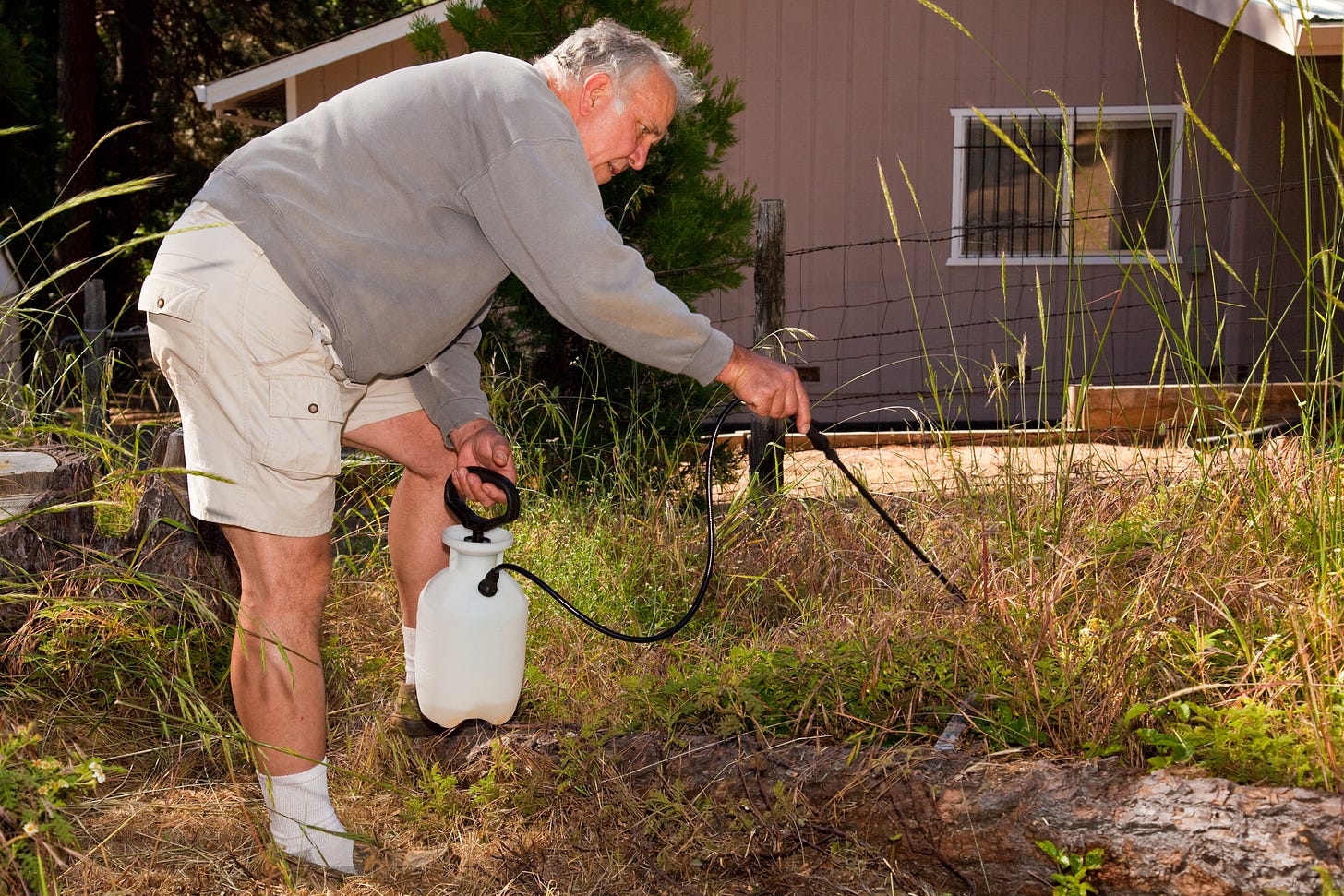This stuff is everywhere, risking the health of our animals - Part 1
You've heard of the term glyphosate, but do you know how this toxic substance impacts the well-being of your animals, your entire family, AND the planet?
Glyphosate is by far the most widely used herbicide in the world.
Just a few years ago no one could pronounce gly-pho-sate, the principal chemical in the widely available herbicide Roundup; and now more folks are becoming keenly aware of it’s omnipresence and toxicity. I have deep gratitude, but also profound sadness, for all those severely injured folks filing lawsuits, and bringing the public’s awareness to this chemical.
Here’s some quick facts:
Glyphosate can be found in more than 700 agriculture, forestry and home products.
It was created and patented in the 1970s by the Monsanto Corporation.
By 2005, its use had increased by more than 1500 percent.
Brazil is the highest user in the world. The US is the second highest.
If you live in the United States, it’s almost impossible to avoid glyphosate exposure and its alarming impact on you, your animals, and all life forms.
In the EU, the general use of glyphosate was banned for a limited time. But now I understand that it’s Europe’s most widely used herbicide.
If you’re a bee or a pollinator insect, the exposure is horrific.
Without bees and pollinators all life on the planet would cease. Period. True fact.
With glyphosate’s profuse use on almond orchards and in crop desiccation (just to name 2 big exposures) the contamination of trees, crops, and wildflowers growing near these crops is steadily increasing in a life-threatening manner. Glyphosate has been found in nectar and pollen, as well as in the honey they need to survive and we eat.
Many scientists world-wide are researching how glyphosate affects the gut microbiota of bees; and other research is showing that the inert ingredients in Roundup are even more harmful to the bees. Whatever the cause, our bees are experiencing ‘Colony Collapse’ at an alarming rate. All this is probably related to the dramatic loss of insects in the last few years.
Where does it get used? Like, everywhere!
Believe it or not, glyphosate was first patented as a broad spectrum anti-parasitic and antibiotic to treat malaria.
Later it became the active ingredient in GMO crops to make them ‘RoundUp Ready’, meaning: they were tolerant to sprayed glyphosate. In RoundUp Ready crops, the glyphosate selectively kills the so-called weeds that are competing with the crops for nutrients, while not harming the GMO varieties.
Big marketing has promoted glyphosate in at least these ways…
As a powerful, stand-alone weed killer.
Or combined with GMO crops as the perfect duo for improved crop yields. But this marketing hasn’t matched reality as yields have not increased.
Or as a crop desiccant to insure that the entire sprayed crop dries in tandem, making it easier to harvest.
So the deeper questions are…
Why would we want an herbicide that kills virtually everything except one crop?
Why would anyone use these products if the yields aren’t increasing?
Isn’t it dangerous to put a chemical on a crop to make production more uniform instead of allowing natural ripening?
Well, I have a lot more questions, but those are a few.
I think of glyphosate as a generic plant killer. The weed-killer euphemism is really language used to justify its use to kill any unwanted plants. Any plants growing between endless rows of corn, soy, wheat, and other crops are considered unwanted weeds by most ‘modern’ agrarian practices.
This is where the war starts. The war against unwanted life forms and the vital life energy we all need to survive — waged in the name of massive profits!
‘Controlling’ bothersome plant life in gardens and public parks is also increasing your own and your animals’ exposure.
Even more dangerous is the combo-wombo formula of glyphosate with 2,4-D (one of the ingredients in Agent Orange, the carcinogenic defoliant used during the Vietnam war). This combo is known as the Enlist Duo. It’s sprayed on genetically modified crops including soy, corn and cotton.
Another area of massive glyphosate use in our environment is as a desiccant for crops like wheat, insuring all parts of the crop are ready for harvest at one time, making for a more efficient harvest. You might wonder whether or not this use of glyphosate on wheat could be associated with the epidemic of gluten intolerance. Could this epidemic of gluten sensitivity really be glyphosate poisoning?
Glyphosate and genetically modified organisms (GMOs) go hand-in-hand.
About 80% of the world’s GMO crops are adapted to be glyphosate-resistant, or ‘Roundup-Ready’, allowing them to survive while all other plants around them die.
Another addition to the Roundup formula is a surfactant agent which increases its adhesion to the plant, decreasing the ability to wash it off. The surfactant has been estimated to make it about 1000 times more toxic! Residual estimates of the amount of time it stays in the soil is somewhere between 23-25 years.
Big GMO crops include corn, soy, sugar beets, canola and alfalfa which are ingredients in most commercial dog and cat dry food. Any wheat, GMO crop, cotton or animal product (meat, bones, milk, cheese) is contaminated with glyphosate.
This is the start of glyphosate education, please stay tuned for Part 2 where I’ll discuss how it actually kills plants, cancer, other chronic diseases related to glyphosate exposure, how to lower the exposure for your animals (and yourself), and how to help the detox mechanisms clean house.
Thank you, thank you, thank you
I so appreciate your reading this post and if you can support my work with a financial contribution I extend my deepest gratitude. If you wish to share the info, pls do! Until the next post, I wish you and yours robust health!




